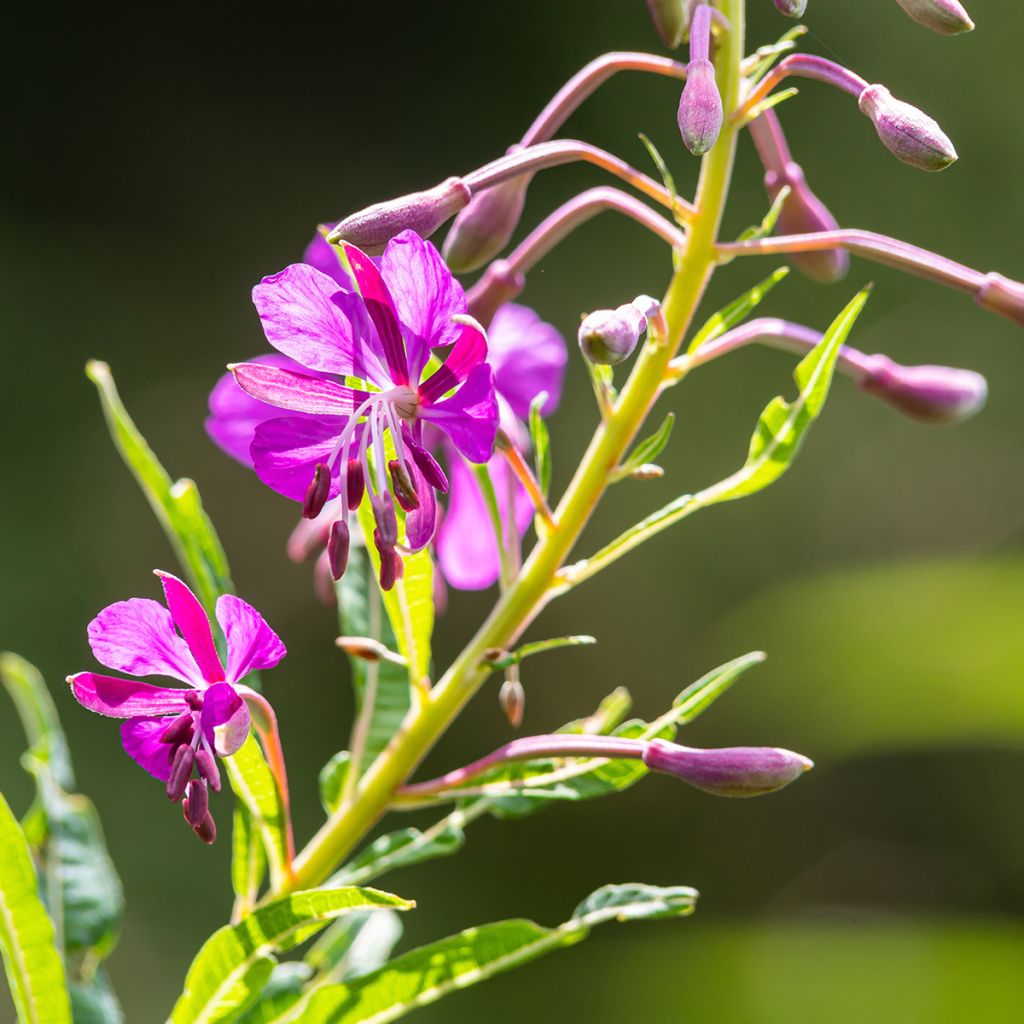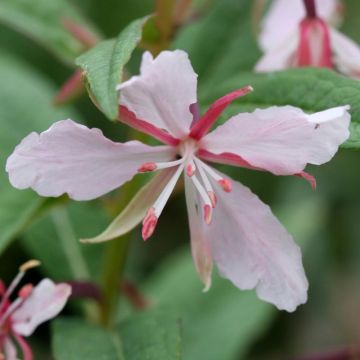

Epilobium angustifolium - Rosebay willowherb


Epilobium angustifolium - Rosebay willowherb


Epilobium angustifolium - Rosebay willowherb


Epilobium angustifolium - Rosebay willowherb
Epilobium angustifolium - Rosebay willowherb
Epilobium angustifolium
Fireweed, Rosebay Willowherb
Special offer!
Receive a €20 voucher for any order over €90 (excluding delivery costs, credit notes, and plastic-free options)!
1- Add your favorite plants to your cart.
2- Once you have reached €90, confirm your order (you can even choose the delivery date!).
3- As soon as your order is shipped, you will receive an email containing your voucher code, valid for 3 months (90 days).
Your voucher is unique and can only be used once, for any order with a minimum value of €20, excluding delivery costs.
Can be combined with other current offers, non-divisible and non-refundable.
Home or relay delivery (depending on size and destination)
Schedule delivery date,
and select date in basket
This plant carries a 12 months recovery warranty
More information
We guarantee the quality of our plants for a full growing cycle, and will replace at our expense any plant that fails to recover under normal climatic and planting conditions.
Would this plant suit my garden?
Set up your Plantfit profile →
Description
Fireweed, known by its Latin name Epilobium angustifolium, is also called Saint Anthony's Laurel or Narrow-leaved Willowherb. It is the wild species from which a few cultivars with white or pink flowers are derived. It is a tall and slender perennial, adorned with clusters of medium pink flowers in summer. Hardy and low-maintenance, it still requires moist and rich soil to thrive. It attracts pollinators and provides high-quality monofloral honey. It is also used in herbal tea for its medicinal properties.
Epilobium angustifolium belongs to the Onagraceae family, and it is a hardy perennial distributed throughout the northern hemisphere. It spontaneously and quickly colonises clearings thanks to its numerous seeds that spread around. While it can be invasive, it allows you to fill a wild space in your garden. It prefers moist soils that are not waterlogged in winter, rich, and neutral to acidic. It enjoys the sun but can also tolerate partial shade which it immediately brightens up. In spring, it quickly develops tall, flexible, yet sturdy stems that easily reach a height of 1.5m. It bears long deciduous leaves. Alternately arranged, lanceolate, and with a prominent central vein, they are a beautiful vibrant green that enhances the flower colour. The flowers appear successively on the upper third of the stem, forming long slightly pyramidal clusters. Consisting of four petals, they measure a maximum of 2cm and also attract insects from July to September.
Rosebay willowherb quickly forms an elegant perennial, which makes it suitable for the middle or back of a border. In a more wild-looking space, mix it with fallow land or wildflower meadow plants. In the middle of a cottage-style border of perennials, it pairs well with tall Phlox, Honesty, Sweet Rocket or Dame's Rocket, and perennial Geraniums, surrounded here and there by green clumps of fennel and grasses.
Epilobium angustifolium can be consumed as a herbal tea made from fresh or dried leaves. It is believed to have approved properties for treating prostate and bladder-related issues, as well as a tonic for the digestive mucosa.
Epilobium angustifolium - Rosebay willowherb in pictures




Flowering
Foliage
Plant habit
Botanical data
Epilobium
angustifolium
Onagraceae
Fireweed, Rosebay Willowherb
Cultivar or hybrid
Other Epilobium - Willowherb
View all →Planting and care
Epilobium angustifolium prefers moist soils and sunny or lightly shaded positions. Like all alpine plants, it is sensitive to excessive moisture in winter. It is hardy, can withstand cold temperatures and adapts to various types of soil.
It self-seeds easily and tends to colonise the garden: ideal for dressing up a neglected corner...or offering young spring shoots to neighbours! To prevent self-seeding, trim the faded flowers. This will extend the flowering period until October.
Planting period
Intended location
Care
Planting & care advice
This item has not been reviewed yet - be the first to leave a review about it.
Similar products
Haven't found what you were looking for?
Hardiness is the lowest winter temperature a plant can endure without suffering serious damage or even dying. However, hardiness is affected by location (a sheltered area, such as a patio), protection (winter cover) and soil type (hardiness is improved by well-drained soil).

Photo Sharing Terms & Conditions
In order to encourage gardeners to interact and share their experiences, Promesse de fleurs offers various media enabling content to be uploaded onto its Site - in particular via the ‘Photo sharing’ module.
The User agrees to refrain from:
- Posting any content that is illegal, prejudicial, insulting, racist, inciteful to hatred, revisionist, contrary to public decency, that infringes on privacy or on the privacy rights of third parties, in particular the publicity rights of persons and goods, intellectual property rights, or the right to privacy.
- Submitting content on behalf of a third party;
- Impersonate the identity of a third party and/or publish any personal information about a third party;
In general, the User undertakes to refrain from any unethical behaviour.
All Content (in particular text, comments, files, images, photos, videos, creative works, etc.), which may be subject to property or intellectual property rights, image or other private rights, shall remain the property of the User, subject to the limited rights granted by the terms of the licence granted by Promesse de fleurs as stated below. Users are at liberty to publish or not to publish such Content on the Site, notably via the ‘Photo Sharing’ facility, and accept that this Content shall be made public and freely accessible, notably on the Internet.
Users further acknowledge, undertake to have ,and guarantee that they hold all necessary rights and permissions to publish such material on the Site, in particular with regard to the legislation in force pertaining to any privacy, property, intellectual property, image, or contractual rights, or rights of any other nature. By publishing such Content on the Site, Users acknowledge accepting full liability as publishers of the Content within the meaning of the law, and grant Promesse de fleurs, free of charge, an inclusive, worldwide licence for the said Content for the entire duration of its publication, including all reproduction, representation, up/downloading, displaying, performing, transmission, and storage rights.
Users also grant permission for their name to be linked to the Content and accept that this link may not always be made available.
By engaging in posting material, Users consent to their Content becoming automatically accessible on the Internet, in particular on other sites and/or blogs and/or web pages of the Promesse de fleurs site, including in particular social pages and the Promesse de fleurs catalogue.
Users may secure the removal of entrusted content free of charge by issuing a simple request via our contact form.
The flowering period indicated on our website applies to countries and regions located in USDA zone 8 (France, the United Kingdom, Ireland, the Netherlands, etc.)
It will vary according to where you live:
- In zones 9 to 10 (Italy, Spain, Greece, etc.), flowering will occur about 2 to 4 weeks earlier.
- In zones 6 to 7 (Germany, Poland, Slovenia, and lower mountainous regions), flowering will be delayed by 2 to 3 weeks.
- In zone 5 (Central Europe, Scandinavia), blooming will be delayed by 3 to 5 weeks.
In temperate climates, pruning of spring-flowering shrubs (forsythia, spireas, etc.) should be done just after flowering.
Pruning of summer-flowering shrubs (Indian Lilac, Perovskia, etc.) can be done in winter or spring.
In cold regions as well as with frost-sensitive plants, avoid pruning too early when severe frosts may still occur.
The planting period indicated on our website applies to countries and regions located in USDA zone 8 (France, United Kingdom, Ireland, Netherlands).
It will vary according to where you live:
- In Mediterranean zones (Marseille, Madrid, Milan, etc.), autumn and winter are the best planting periods.
- In continental zones (Strasbourg, Munich, Vienna, etc.), delay planting by 2 to 3 weeks in spring and bring it forward by 2 to 4 weeks in autumn.
- In mountainous regions (the Alps, Pyrenees, Carpathians, etc.), it is best to plant in late spring (May-June) or late summer (August-September).
The harvesting period indicated on our website applies to countries and regions in USDA zone 8 (France, England, Ireland, the Netherlands).
In colder areas (Scandinavia, Poland, Austria...) fruit and vegetable harvests are likely to be delayed by 3-4 weeks.
In warmer areas (Italy, Spain, Greece, etc.), harvesting will probably take place earlier, depending on weather conditions.
The sowing periods indicated on our website apply to countries and regions within USDA Zone 8 (France, UK, Ireland, Netherlands).
In colder areas (Scandinavia, Poland, Austria...), delay any outdoor sowing by 3-4 weeks, or sow under glass.
In warmer climes (Italy, Spain, Greece, etc.), bring outdoor sowing forward by a few weeks.



















































